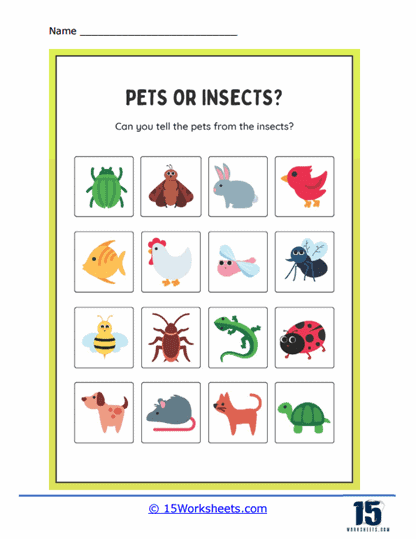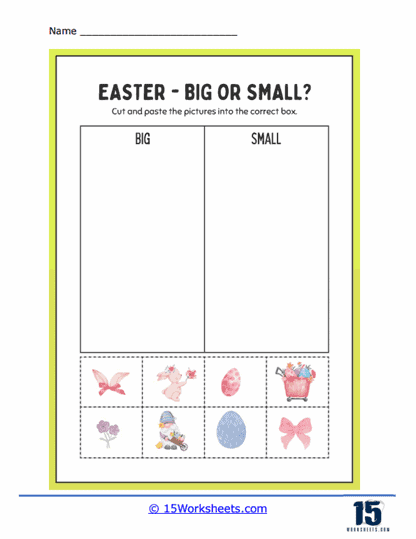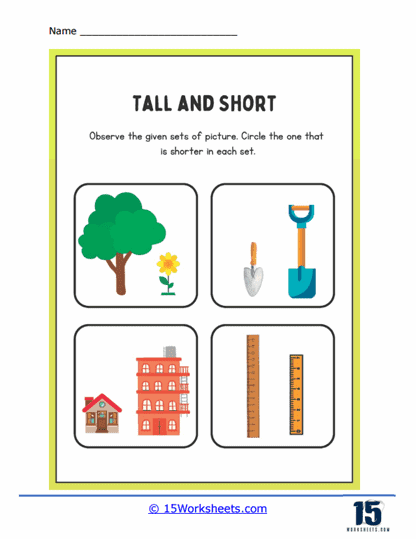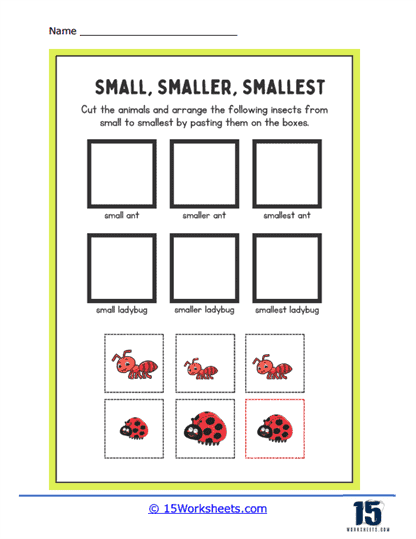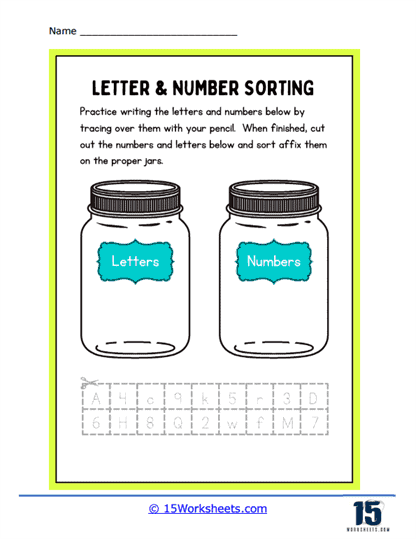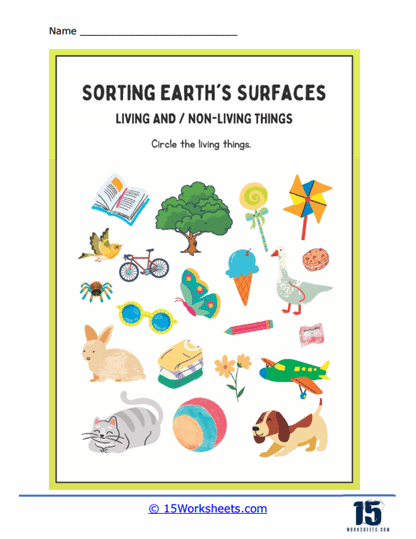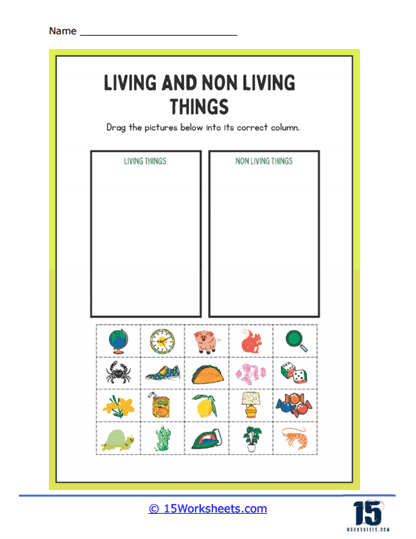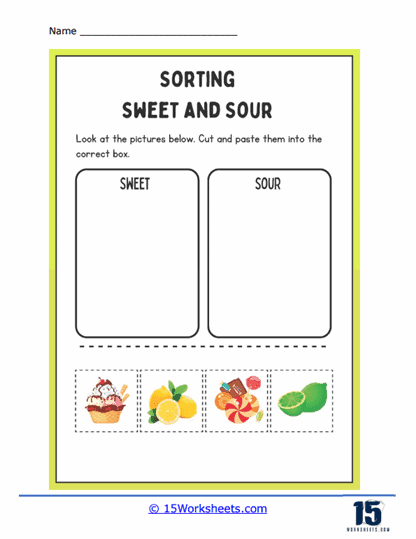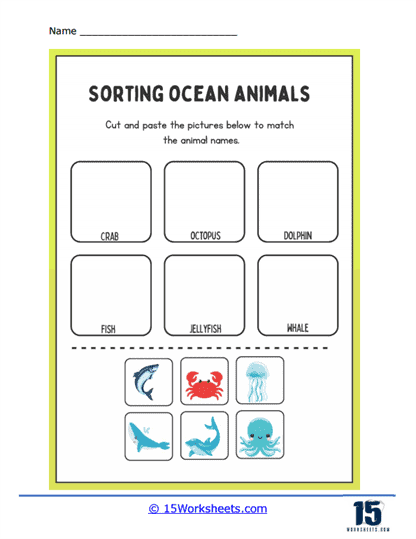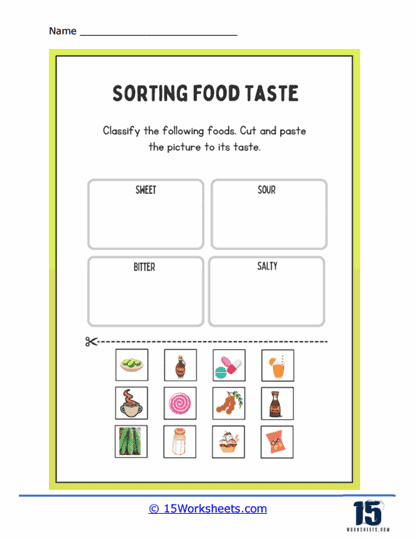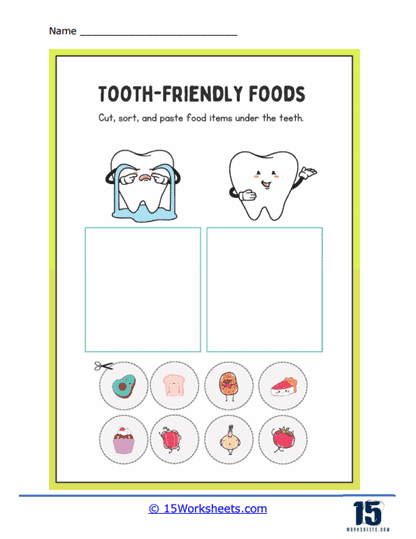Sorting and Categorizing Worksheets
About These 15 Worksheets
Sorting and categorizing worksheets are valuable educational resources that are used to enhance cognitive development in students. They are designed to enable learners to differentiate between items or concepts, classify them based on specific criteria, and organize them into appropriate groups or categories. The fundamental principle behind these worksheets is to strengthen students’ skills in critical thinking, logical reasoning, visual perception, and problem-solving.
Different types of exercises that could be expected in sorting and categorizing worksheets are:
Color Sorts – This exercise encourages children to differentiate between various colors. For instance, students might be given a group of colored objects and asked to sort them into different groups based on color. This exercise improves students’ visual discrimination skills, their understanding of different colors, and their ability to classify based on color characteristics.
By Shape – Here, students are tasked with sorting a series of shapes. For example, they may have to separate circles from squares or triangles. This task enhances students’ visual-spatial awareness, and their knowledge of basic geometric shapes.
By Size – In these exercises, students are asked to categorize objects based on size, such as small, medium, or large. This activity promotes students’ understanding of size differentiation and boosts their spatial reasoning skills.
Alphabetical Arrangements – This involves sorting words or names in alphabetical order. Such exercises foster students’ literacy skills, knowledge of the alphabet, and their ability to arrange things systematically.
Numerical – This involves sorting numbers either in ascending or descending order. It sharpens students’ numerical knowledge and their understanding of mathematical sequences.
Categorizing Objects – Students could be given images of various objects and asked to categorize them based on their types, such as animals, plants, food, etc. This exercise enhances students’ cognitive development by improving their understanding of the different categories of objects.
Categorizing Concepts – This is a more abstract version of the previous activity, where students need to categorize concepts or ideas, like emotions or actions, instead of physical objects. This helps students develop higher-order thinking skills.
All of these exercises serve a crucial purpose in enhancing students’ skills. They boost the students’ cognitive ability to distinguish, classify, and organize different objects or concepts based on their properties. By doing so, they help to improve critical thinking skills, boost problem-solving ability, increase attention to detail, and improve pattern recognition. Furthermore, they build a strong foundation for subjects that require these skills, such as math, science, and language arts.
Sorting and categorizing skills are integral in cognitive development. They form a basis for how we perceive and understand the world around us. These skills are particularly important in the classroom setting because they underpin a multitude of academic disciplines. These exercises encourage children to make judgments and decisions based on their observation and analysis. They learn to classify objects or concepts based on characteristics or criteria, thereby building their critical thinking and problem-solving skills. These skills are fundamental to their overall intellectual development and future learning experiences.
Building Blocks of Knowledge – Sorting and categorizing activities are fundamental to understanding complex subjects. From distinguishing between different sounds in language learning to identifying species in biology or sorting data in mathematics, these basic skills pave the way for more complex reasoning. In language arts, these skills are used when arranging words alphabetically or identifying patterns in stories or texts. These experiences lay the groundwork for more advanced concepts in these areas.
Critical Thinking and Problem-Solving – These skills help students to make sense of the world by identifying patterns, classifying information into categories, and making connections between different pieces of information. This aids in problem-solving and decision-making, both of which are crucial life skills.
Focus and Attention – Sorting and categorizing tasks require concentration and mindfulness, as students must pay attention to the characteristics and differences of each item. This helps to improve their focus and attention span.
Cognitive Development – Such activities promote logical thinking, a cognitive skill crucial in learning. They enhance memory recall by arranging information into manageable groups, facilitating easier retrieval of knowledge.
Enhances Memory and Recall – When students sort and categorize information, they organize it into a structure that makes it easier for them to remember and recall later. This skill can improve their ability to study effectively and absorb new information.
Boosts Pattern Recognition – Sorting and categorizing activities help children identify and understand patterns, a key aspect of many mathematical and scientific concepts. Recognizing patterns helps children predict what will come next and makes it easier for them to understand complex systems.
Promotes Organizational Skills – By practicing sorting and categorizing, children can develop their ability to organize, a skill that is important not just in academic contexts but in everyday life. It encourages them to keep their physical and mental spaces tidy and orderly, leading to increased efficiency and reduced anxiety.
In essence, the ability to sort and categorize is not just a simple academic skill, but it plays a crucial role in the development of cognitive abilities, critical thinking, pattern recognition, and organizational skills. This foundational competence is thus critical for young students as it sets the stage for their future learning and understanding of the world.



